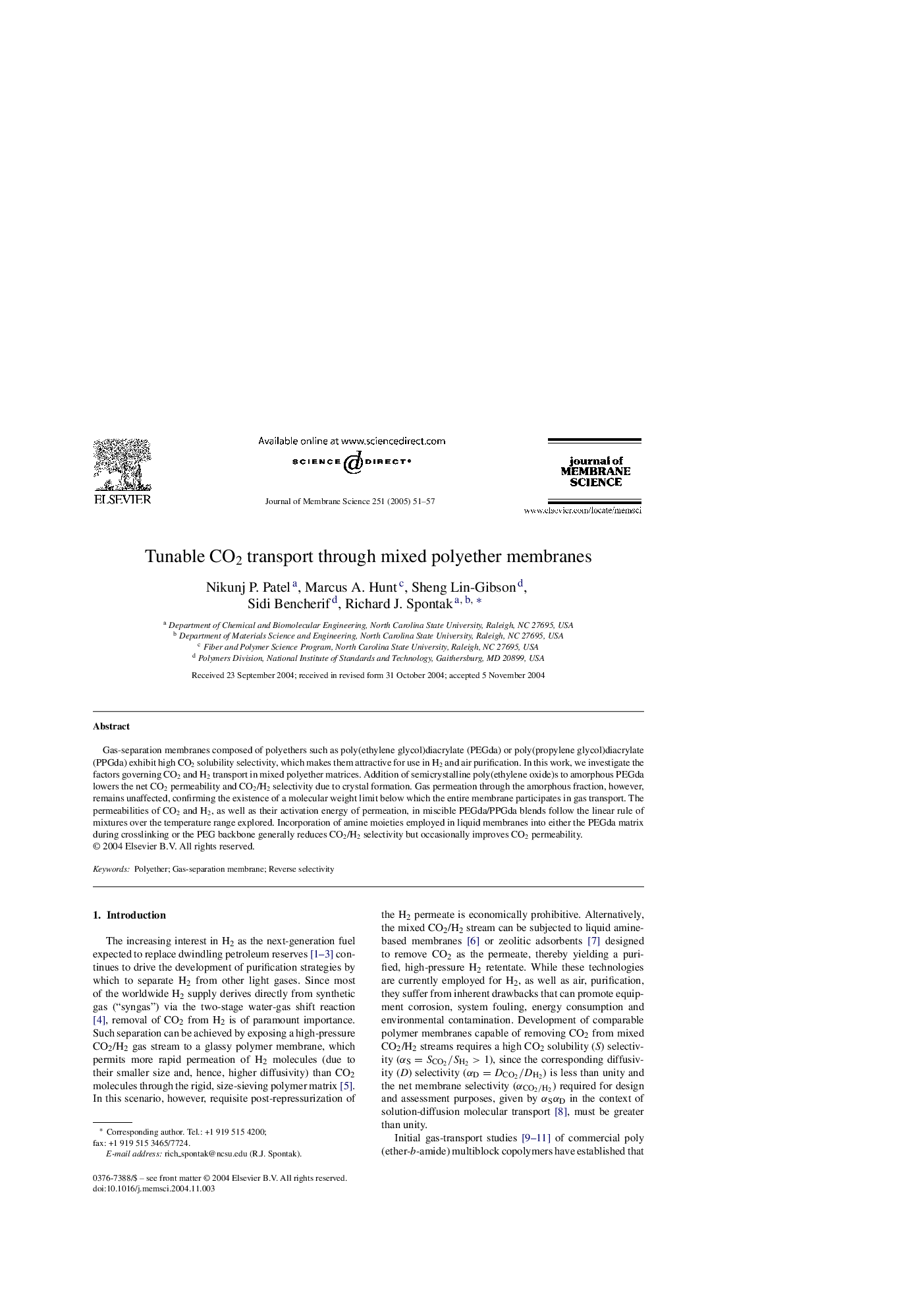| Article ID | Journal | Published Year | Pages | File Type |
|---|---|---|---|---|
| 9684966 | Journal of Membrane Science | 2005 | 7 Pages |
Abstract
Gas-separation membranes composed of polyethers such as poly(ethylene glycol)diacrylate (PEGda) or poly(propylene glycol)diacrylate (PPGda) exhibit high CO2 solubility selectivity, which makes them attractive for use in H2 and air purification. In this work, we investigate the factors governing CO2 and H2 transport in mixed polyether matrices. Addition of semicrystalline poly(ethylene oxide)s to amorphous PEGda lowers the net CO2 permeability and CO2/H2 selectivity due to crystal formation. Gas permeation through the amorphous fraction, however, remains unaffected, confirming the existence of a molecular weight limit below which the entire membrane participates in gas transport. The permeabilities of CO2 and H2, as well as their activation energy of permeation, in miscible PEGda/PPGda blends follow the linear rule of mixtures over the temperature range explored. Incorporation of amine moieties employed in liquid membranes into either the PEGda matrix during crosslinking or the PEG backbone generally reduces CO2/H2 selectivity but occasionally improves CO2 permeability.
Keywords
Related Topics
Physical Sciences and Engineering
Chemical Engineering
Filtration and Separation
Authors
Nikunj P. Patel, Marcus A. Hunt, Sheng Lin-Gibson, Sidi Bencherif, Richard J. Spontak,
